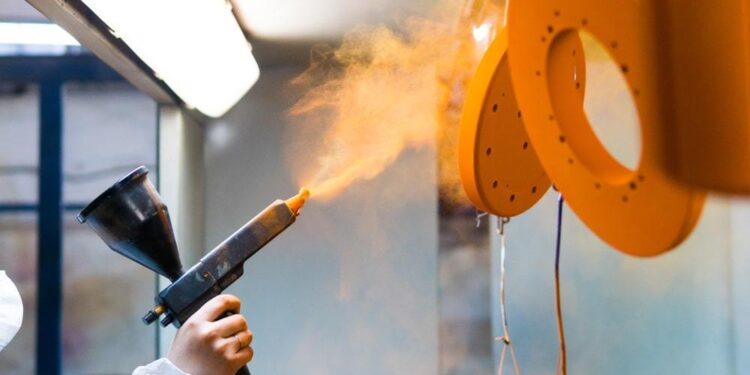Powder coating technology has significantly evolved, offering remarkable finishes with enhanced durability. However, when dealing with delicate surfaces, the challenge of heat sensitivity cannot be overlooked. This blog post will delve into essential strategies and guidelines for using powder coating guns on such surfaces, ensuring a perfect balance between aesthetics and material integrity.
Assessing Temperature Tolerance of Substrates
When applying powder coatings, the first crucial step is understanding the temperature tolerance of the substrate. Different materials, from metals to thermosensitive plastics, have varying degrees of heat resistance. It’s imperative to identify the maximum temperature that the substrate can withstand without degrading. This information serves as a guideline for adjusting the curing temperature. Knowledge of thermal properties not only prevents damage but also ensures that the coating adheres properly, resulting in a flawless finish.
Specialty Low-Cure Powder Formulations
Advancements in powder coating technology have led to the development of specialty low-cure powder formulations. These powders are designed to cure at temperatures significantly lower than traditional powders. They are ideal for substrates that cannot endure high heat. These formulations, while offering a lower thermal footprint, do not compromise on the quality or durability of the coating. The use of these powders with compatible powder coating guns can achieve excellent results on heat-sensitive surfaces.
Customizing Cure Conditions Through Zoned Ovens
Zoned ovens represent a breakthrough in customizing curing conditions for different substrates. By creating zones with varying temperatures within the oven, it’s possible to cure different parts of a component at different temperatures. This is particularly useful for complex parts made of multiple materials, each with unique heat sensitivities. Zoned ovens, in conjunction with precise temperature controls, ensure that each area of the substrate receives the optimal curing environment, enhancing the overall quality of the coating.
Alternative Low-Heat Curing Methods
For extremely heat-sensitive substrates, alternative low-heat curing methods can be employed. Techniques such as UV curing and infrared curing are becoming increasingly popular. UV curing, for instance, uses ultraviolet light to cure the powder coating, significantly reducing the heat exposure of the substrate. Infrared curing, on the other hand, uses infrared light to achieve a similar effect. These methods are not only efficient but also reduce energy consumption, making them an eco-friendly option.
Limiting Film Buildup for Better Heat Dissipation
One of the key aspects of applying powder coatings on heat-sensitive surfaces is limiting film buildup. Excessive film thickness can lead to poor heat dissipation, increasing the risk of substrate damage during curing. By using powder coating guns with precise control over the amount of powder dispensed, it’s possible to achieve an even, thin coating that cures uniformly and dissipates heat more effectively. This approach not only protects the substrate but also enhances the aesthetic appeal of the coating.
Considering Secondary Backside Heating Sources
Finally, it’s crucial to consider secondary backside heating sources when curing powder coatings. These sources can inadvertently increase the temperature of the substrate, especially in areas not directly exposed to the primary heat source. Strategies such as shielding sensitive areas or using heat sinks can mitigate this risk. Understanding and managing these secondary sources is vital for achieving a high-quality finish without compromising the integrity of the substrate.
Conclusion
In conclusion, the application of powder coatings on delicate, heat-sensitive surfaces requires a thoughtful approach that considers the unique characteristics of each substrate. From selecting the right powder formulations to employing advanced curing methods and controlling film thickness, each step plays a crucial role in achieving a durable and visually appealing finish. By following these guidelines, professionals can harness the full potential of powder coating guns while ensuring the safety and integrity of sensitive materials. Read more exciting articles on Tech new master

















